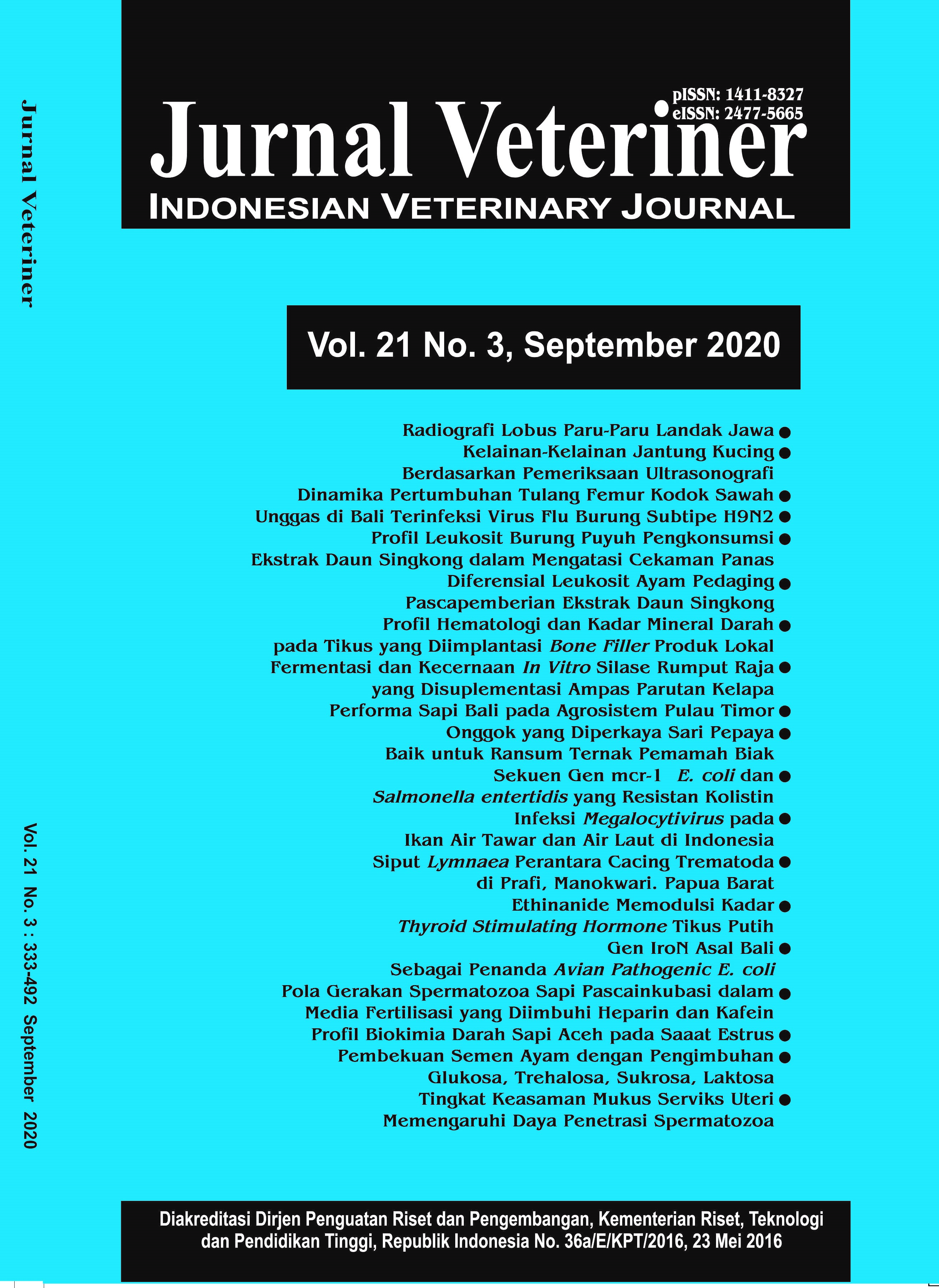Rumen Fermentation Characteristic and In Vitro Digestibility of King Grass Silage Supplemented with Shredded Coconuts Pulp
Abstract
Shredded coconuts pulps are the potential wastes of coconuts product that can be used as a feed alternative because it contains enough nutrients. In the other side fat content of shredded coconut pulp are high enough. High-fat will bother the fermentation process in the rumen. The fermentation process can improve the quality of the digestibility and nutrient content of shredded coconut pulp. The purpose of this study was to evaluate the effect of silage formulation of shredded coconut pulp on in vitro rumen fermentation characteristics. P2 treatment gave the highest gas production than other treatment. Percentage of acetate, propionate, and butyrate, Acetate to Propionate ratio (A:P), Non glucogenic Ratio (NGR), Ammonia-N (NH3) production of shredded coconut pulp was significantly affected by treatments (P<0.05). Total gas production 48 hours, gas production from soluble fraction (a), insoluble fraction (b), total fraction (a+b), total VFA and biomass microbial rumen of silage gave no significant difference among treatments (P>0.05). While in total gas production 48 hours not significant, when it breakdown each hour show significant results, which means there is an increase in feed degradability. In this study silage formulation using, 8% rice bran, 5.4% of shredded coconut pulp and 2.6% “gaplek” flour treatment has the best degradability on in vitro rumen fermentation characteristics.
Keyword: silage, shredded coconut pulp, rumen fermentation, in vitro.



















